Abstract
Chub injected in the loin muscle with 106Clostridium botulinum type E spores were smoked to an internal temperature of 180 F (82.2 C) for 30 min, sealed in plastic bags, and incubated at room temperature (20 to 25 C) for 7 days. Viable type E spores were found in practically all such fish. Toxin formation by the survivors in the smoked fish was dependent on the brine concentration of the smoked fish. A brine concentration of 3% or higher, as measured in the loin muscle, inhibited toxin formation. Six different type E strains gave similar results. Only a few hundred of the million spores in the inoculum survived the smoking. Moisture in the atmosphere during smoking did not reduce the incidence of fish with type E survivors.
Full text
PDF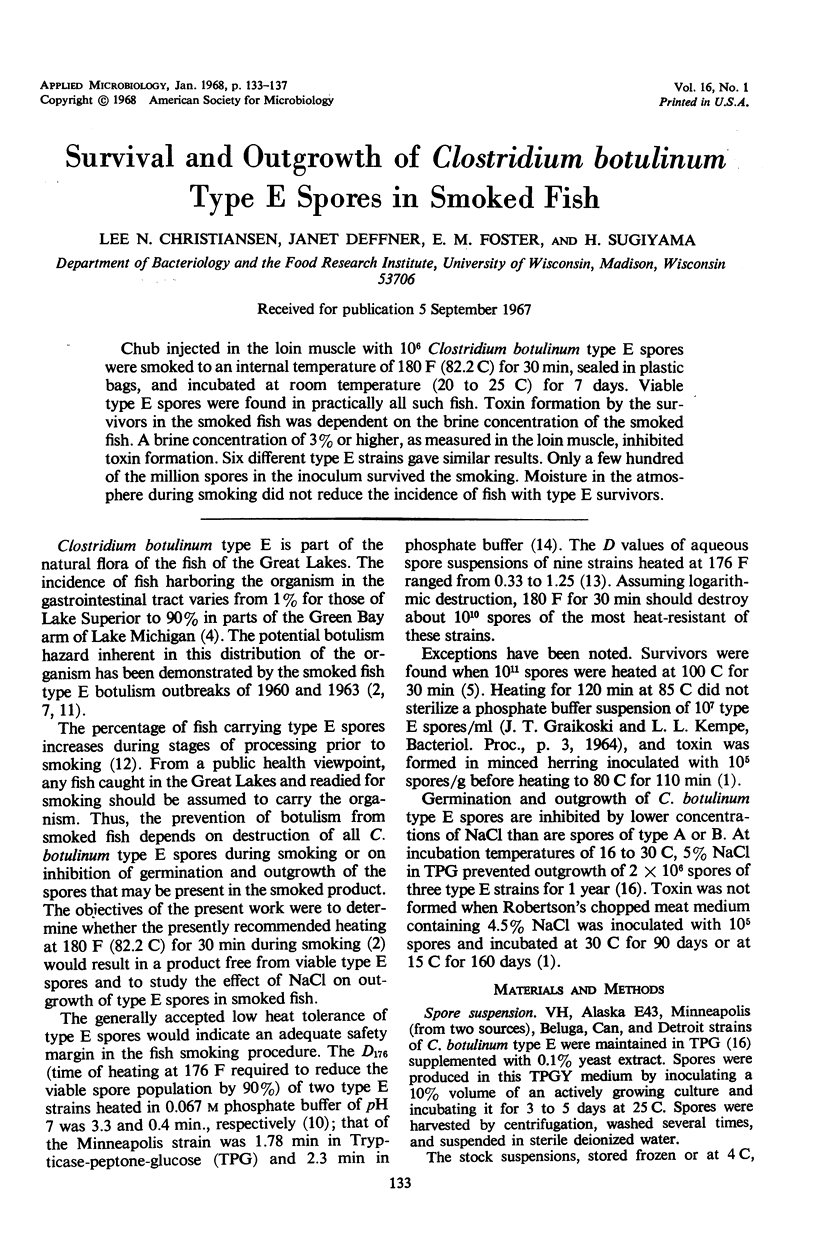
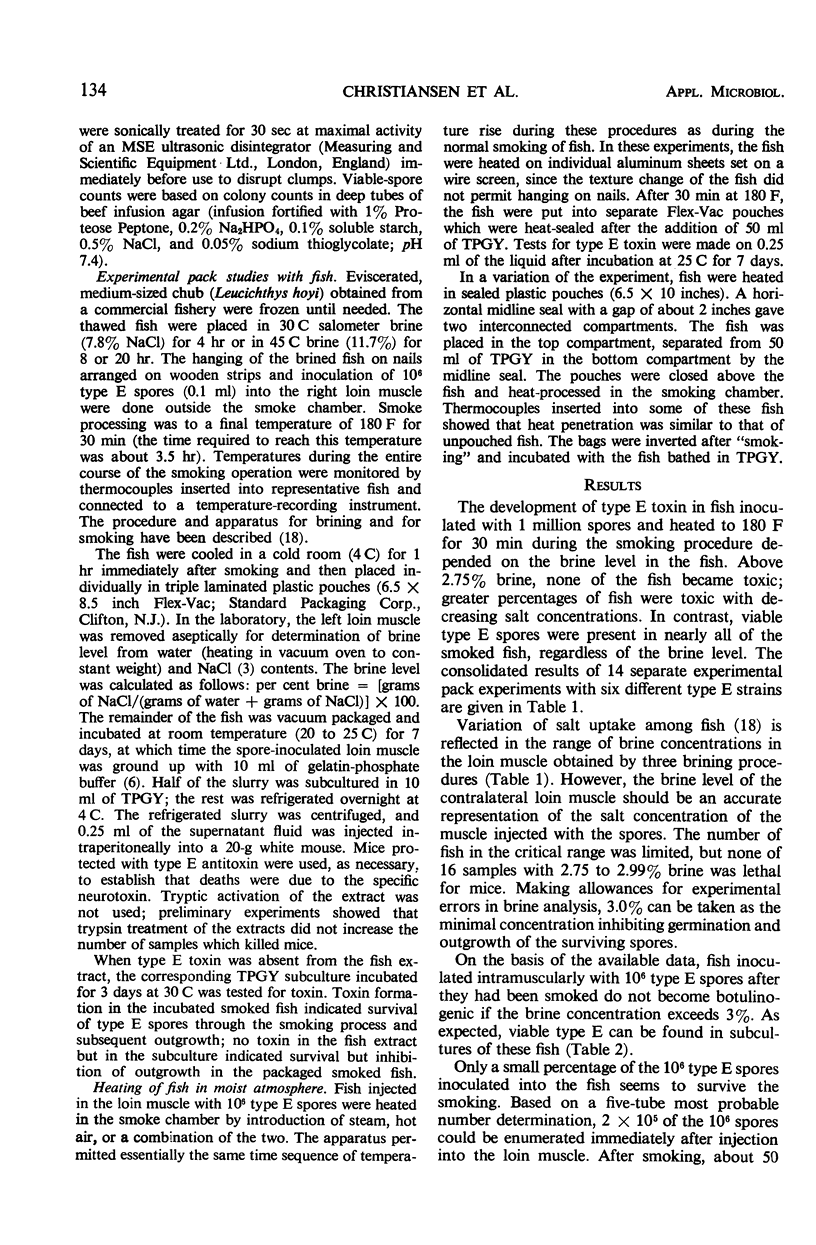
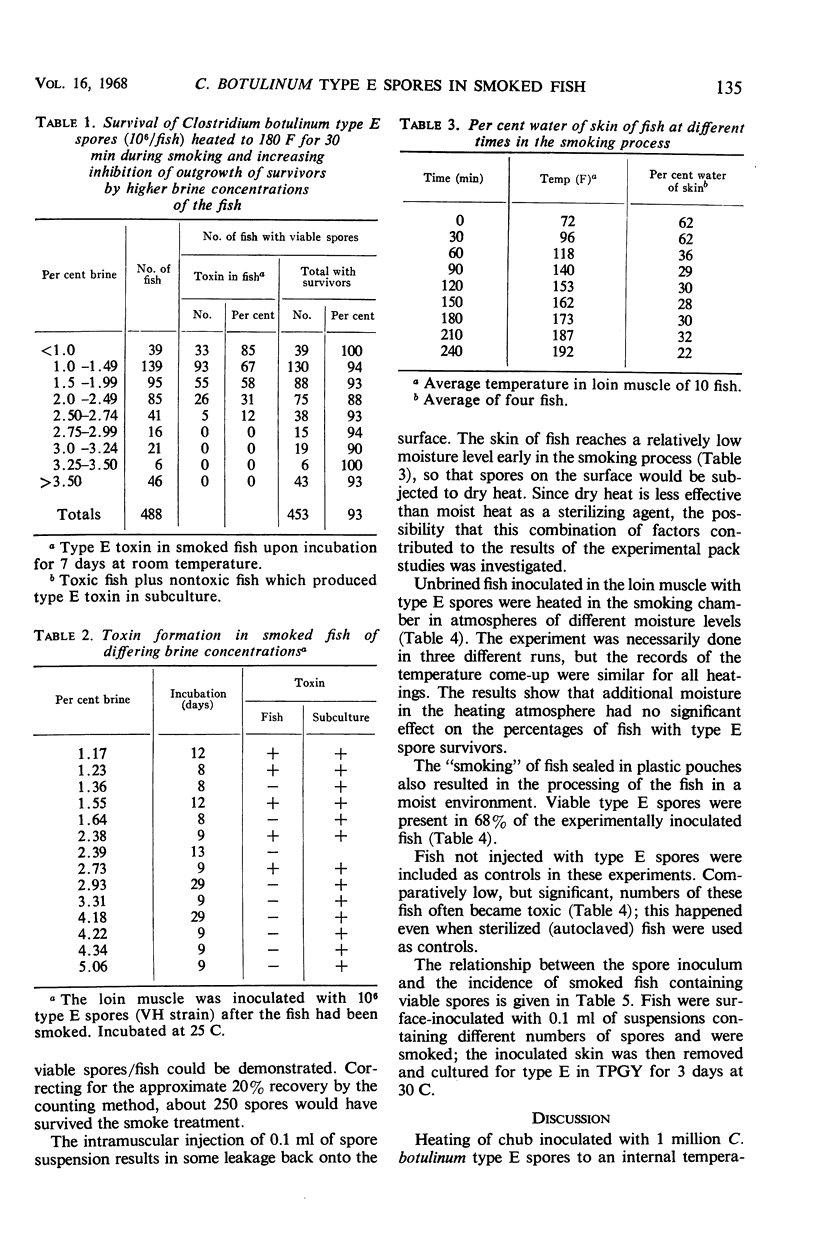
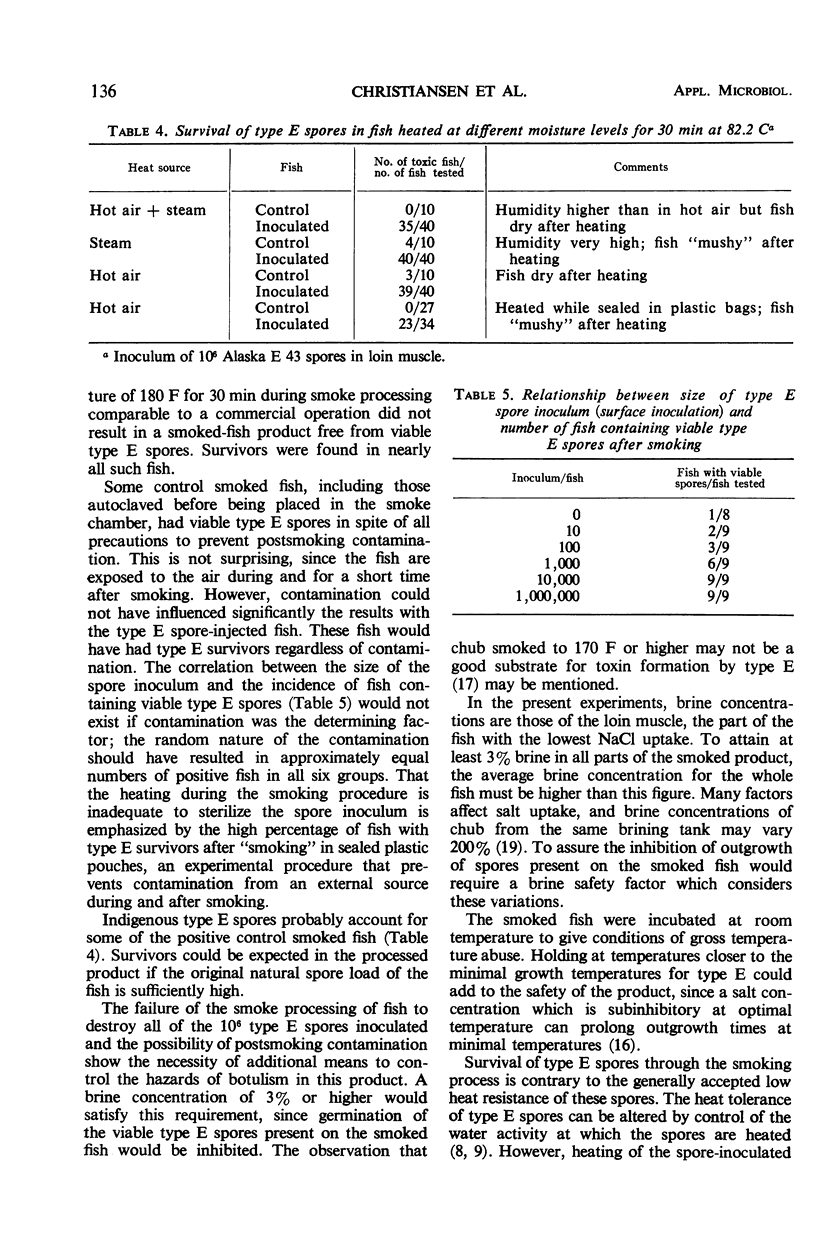
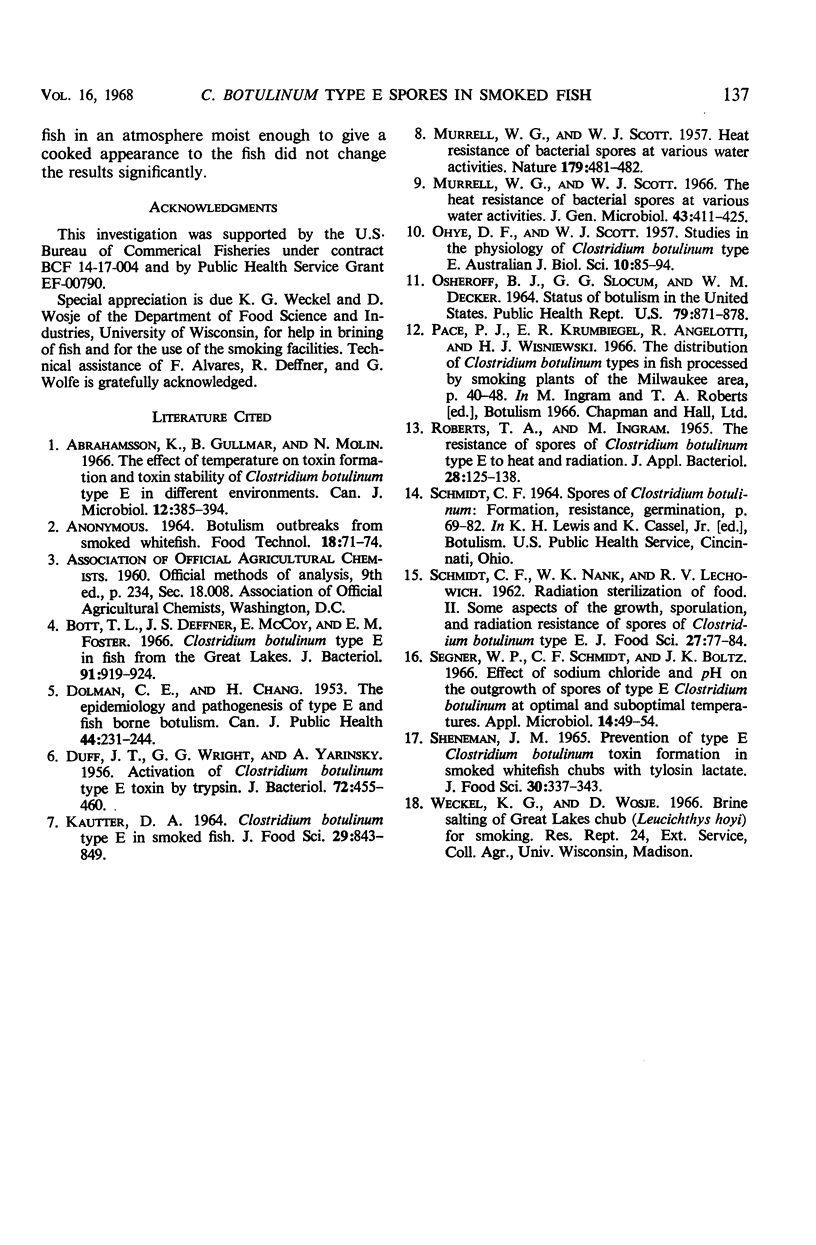
Selected References
These references are in PubMed. This may not be the complete list of references from this article.
- Abrahamsson K., Gullmar B., Molin N. The effect of temperature on toxin formation and toxin stability of Clostridium botulinum type E in different environments. Can J Microbiol. 1966 Apr;12(2):385–394. doi: 10.1139/m66-052. [DOI] [PubMed] [Google Scholar]
- Bott T. L., Deffner J. S., McCoy E., Foster E. M. Clostridium botulinum type E in fish from the Great Lakes. J Bacteriol. 1966 Mar;91(3):919–924. doi: 10.1128/jb.91.3.919-924.1966. [DOI] [PMC free article] [PubMed] [Google Scholar]
- DOLMAN C. E., CHANG H. The epidemiology and pathogenesis of type E and fishborne botulism. Can J Public Health. 1953 Jul;44(7):231–244. [PubMed] [Google Scholar]
- DUFF J. T., WRIGHT G. G., YARINSKY A. Activation of Clostridium botulinum type E toxin by trypsin. J Bacteriol. 1956 Oct;72(4):455–460. doi: 10.1128/jb.72.4.455-460.1956. [DOI] [PMC free article] [PubMed] [Google Scholar]
- MURRELL W. G., SCOTT W. J. Heat resistance of bacterial spores at various water activities. Nature. 1957 Mar 2;179(4557):481–482. doi: 10.1038/179481a0. [DOI] [PubMed] [Google Scholar]
- Murrell W. G., Scott W. J. The heat resistance of bacterial spores at various water activities. J Gen Microbiol. 1966 Jun;43(3):411–425. doi: 10.1099/00221287-43-3-411. [DOI] [PubMed] [Google Scholar]
- OSHEROFF B. J., SLOCUM G. G., DECKER W. M. STATUS OF BOTULISM IN THE UNITED STATES. Public Health Rep. 1964 Oct;79:871–878. [PMC free article] [PubMed] [Google Scholar]
- Segner W. P., Schmidt C. F., Boltz J. K. Effect of sodium chloride and pH on the outgrowth of spores of type E Clostridium botulinum at optimal and suboptimal temperatures. Appl Microbiol. 1966 Jan;14(1):49–54. doi: 10.1128/am.14.1.49-54.1966. [DOI] [PMC free article] [PubMed] [Google Scholar]


